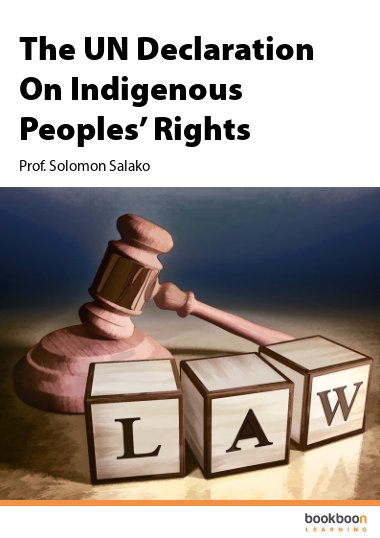Historically, the genesis of indigenous peoples’ rights could be traced to the late fifteenth and early sixteenth century. Theologians and founders of international law Bartholomé de las Casas (1474–1566) and Francisco de Vitoria (1486–1547) chronicled the relationship between Europeans and indigenous peoples in the Indies and asserted that Indians, as indigenous peoples, have certain autonomous powers and entitlement to their lands which Europeans were bound to respect. The debate on indigenous peoples’ entitlement was kept alive from the seventeenth century to mid-eighteenth century by Grotius, Hobbes, Wolff and Vattel. It was in the mid-twentieth century that the “principle” of self-determination ascribed, inter alia, to the Declaration of Independence of the United States of America of 4th July 1776 evolved into peoples’ “right” to self-determination in two international human rights documents: the International Covenant on Civil and Political Rights 1966 (ICCPR) and the International Covenant on Social and Cultural Rights 1966 (ICESCR).
The main thesis of this book is that the United Nations Declaration on the Rights of Indigenous Peoples 2007 (UNDRIP) is a redeployment of the rights in the ICCPR and ICESCR to address global issues such as poverty and human rights, protection of the environment and intra- and inter-generational justice and the protection of the lands, natural resources, biogenetic resources and related traditional knowledge and folklores of indigenous peoples which are inextricably intertwined with their religions, cultures and customary laws.
The book, constructed around the development of indigenous peoples’ rights in international law, is a jurisprudential analysis of the rights promulgated in the UNDRIP. It is argued that the collective rights of indigenous peoples promulgated in the UNDRIP are not incongruous with individual rights; that the right to development of indigenous peoples is a fundamental right; and that present and future generations of indigenous peoples who inhabit islands have the right not to be adversely affected by flooding or submerged totally because of climate change caused by present generation. Finally, the right of indigenous peoples to their biogenetic resources and related traditional knowledge developed over millennia and protected by UNDRIP is reconciled with the intellectual property rights of transnational agrobiotechnology corporations asserted to recoup the vast sums spent on research into exploiting the specific genetic characteristics of plants and animals which are sometimes the result of millennia of breeding and improvement by indigenous peoples.
In writing this book, I have acquired so many debts which I should like to acknowledge here. My most important debt is to my wife, Diane Salako, who has had to deal with my preoccupation with this project. My sincere gratitude to Karin Hamilton Jacobsen and the editorial staff of Bookboon for their support and understanding during the gestation period. I must also express my gratitude to Sue Wiseman for using her immense word-processing skills in typing and formatting the manuscript within a short space of time.
The book is dedicated to my wife, Diane Salako, and my late father, Samuel Oluseye Salako (1910–2010).
Solomon E. Salako
Liverpool
United Kingdom
February 2014


